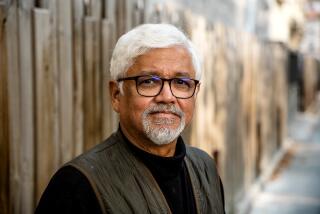Illicit drugs were once called tonics
- Share via
These days, cocaine, heroin and other illicit drugs are better known for the problems they cause than the ones they solve. Over a century ago, though, the stimulant effects of cocaine and the painkilling qualities of heroin and other opium-derived drugs made these common ingredients in over-the-counter medicines.
That trend created at least one urban legend that happens to be true: Coca-Cola, originally concocted in the 1880s as a cure-all medicinal tonic, really did once contain cocaine.
The leaves of the coca plant, from which cocaine is derived, have long been chewed by natives of the South American Andes to relieve altitude sickness, exhaustion and pain. In the mid-19th century, visitors from North America and Europe took note. They began making their own coca-leaf extracts, containing varying amounts of cocaine.
Soon, cocaine-based remedies were being sold in drugstores, groceries and soda shops, marketed to mothers of newborns, businessmen, public speakers, singers, actors, priests and baseball players.
Doctors lauded the stimulant for dulling pain, strengthening the pulse, calming nervousness and helping the body heal. Not only did it do all that, wrote a New England doc in the 1870s, “it invariably contributes to the mental cheerfulness.”
The drug wasn’t snorted or (necessarily) chewed. It was applied to the gums in the form of toothache powders, placed on the tongue via dysentery drops, slowly consumed through throat lozenges -- and copiously gulped in medicinal wines.
Beginning in the 1860s, coca wines were a widely popular cure for seasickness, headache, hay fever and anemia, plus “neuralgia, sleeplessness, [and] despondency,” in the words of coca wine maker Theodore Metcalf & Co.
Metcalf’s wine wasn’t the top seller of the day: Italian druggist Vin Mariani’s was. A 19th century ad for Vin Mariani’s coca wine claimed it was endorsed by more than 7,000 prominent physicians in Europe and America. Other ads boasted endorsements by Jules Verne and the pope.
Hoping to surpass the success of coca-wine makers, Atlanta druggist John Pemberton took the product a step further. He combined coca extract with an extract of cola, a caffeine-rich African drug, and mixed the two with alcohol. He later took out the alcohol, and the tonic became known as Coca-Cola.
Not long after cocaine appeared on drugstore shelves, it was joined by heroin. German drug maker Bayer put the drug in cough suppressants; others put it in remedies for asthma and pneumonia, often mixing it with sugar and spices to mask its bitter taste.
But opium was a more popular remedy than either cocaine or heroine. Mrs. Winslow’s soothing syrup, which contained the opium extract morphine, was advertised as perfect for quieting teething kids -- which it undoubtedly did very well.
Paregoric, a mixture of opium and alcohol, was a common cure for diarrhea. Boston’s Stickney and Poor Spice Co. recommended a daily teaspoon of the drug for an adult -- and five drops for a 5-day-old baby.
Opium was also injected (a remedy Florence Nightingale turned to for her severe back pain)and, of course, smoked -- and not only in times of sickness and pain.
By the time physicians and psychiatrists began to suspect that users could get hooked on cocaine, it was clear that opium, too, was powerfully addictive. In fact, many of the early addicts to both drugs were those who prescribed and sold them -- that is, the doctors and druggists themselves.
Ultimately, the U.S. government stepped in to address the growing problem of addiction. The 1906 Pure Food and Drug Act and the 1914 Harrison Act took cocaine, opium and other narcotics off drugstore shelves and required that doctors be licensed to prescribe the drugs.
By then, many drug manufacturers had quietly taken the vilified ingredients out of their popular products. Sometime around the turn of the century, cocaine, for one, was taken out of Coca-Cola. It hasn’t been in the drink for at least a hundred years.
More to Read
Sign up for Essential California
The most important California stories and recommendations in your inbox every morning.
You may occasionally receive promotional content from the Los Angeles Times.










